How To Get Strong
Use these 50 expert strength tips to get stronger
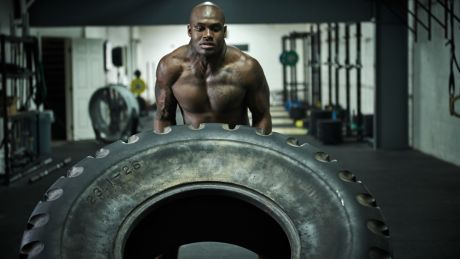
There’s more to training than big muscles. Fine-tune your sessions to ensure you’re making your body stronger and more functional – and improving your everyday life.
Boost Your Big Three
Tweak your technique in the bench press, deadlift and back squat for near-instant gains.
1. Find your width
A narrow grip on the bar when benching works your triceps harder, while going wide can increase your injury risk. Work out your most efficient grip width by measuring the distance between the sticking-out bits on your collarbone and multiplying it by 1.5.
2. Take three steps
“Don’t shuffle the bar out of the rack when you squat,” says Skorpion fitness coach James Adamson. “The best lifters take it out in three steps: back, back, slightly to the side.” Any more wastes energy you could be using to get the weight back up.
3. Use pre-tension
During the deadlift, take the strain on the bar for a second or two before you pull. You should be aiming to create tension in your lats, hamstrings and glutes before you actually move.
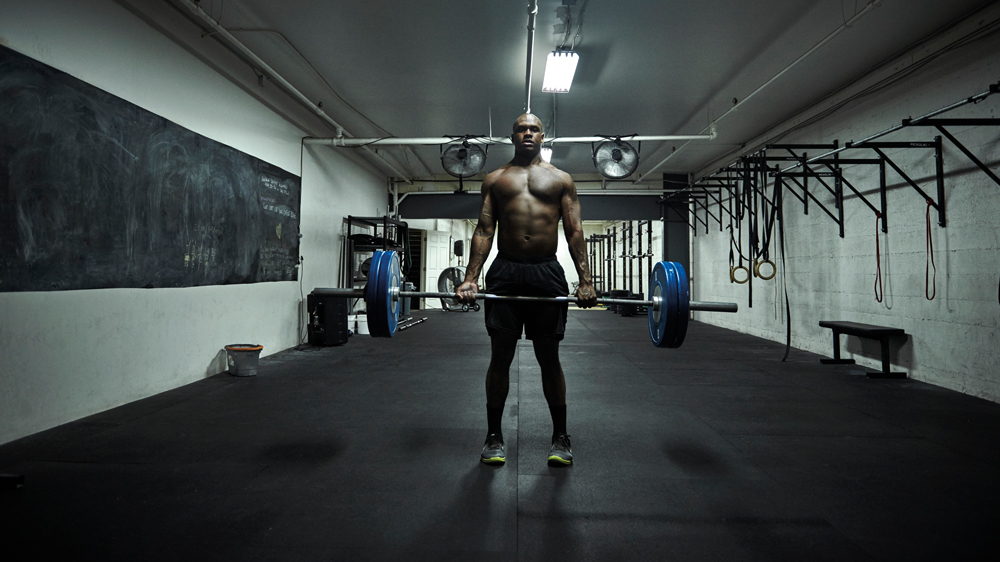
4. Stay solid
In the squat and deadlift, intra-abdominal pressure – the feeling you get when you brace for a punch in the stomach – is key. “Take a big breath and hold it through a big lift,” says Adamson. “You’ll create a more stable base for lifting.”
5. Think pockets
Efficient deadlifting means keeping your shoulder blades aligned and protecting your lower back. “Pull your shoulder blades down and back, towards your back pockets,” says Adamson. “It’ll stop you hunching – and let you lift more weight.”
Get the Coach Newsletter
Sign up for workout ideas, training advice, reviews of the latest gear and more.
6. Curve your press
Amateur benchers press the bar straight up, then back. Pros press back and up. That was the conclusion of Thomas McLaughlin, who compared nationally-ranked powerlifters with novices, and found that the very best save the “straight up” bit for the end.
Harden Your Core
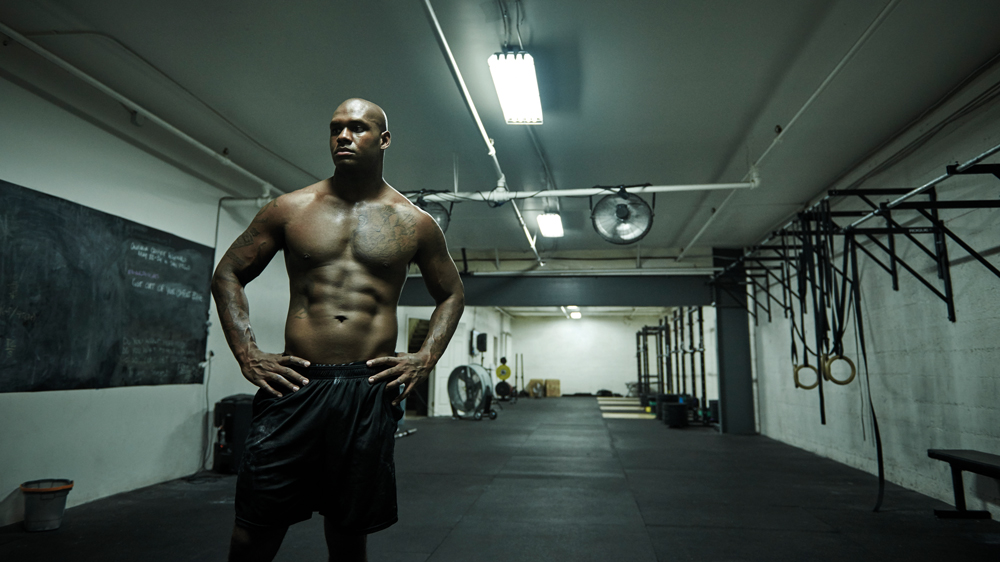
Strengthening your abs, obliques and lower back will make every move you do more efficient. Add this circuit, created by trainer Adam Wakefield, to the end of your routine twice a week.
7. Rowing plank
“Fasten a resistance band ahead of where you’ll be planking,” says Wakefield. “Take the band in one hand and get into a plank with that arm fully extended in front of you. Pull it towards your ribs for five to eight reps, then switch sides.”
8. Gym ball tuck
“Put your shins on a gym ball that’s slightly below waist height, then get into a plank position. Keeping your upper body and core as stable as you can, tuck your knees towards your chest and squeeze your abs. Then return back to the start.”
9. Stir-the-pot
“First, get into a plank position with your elbows on a gym ball. Once you’re there, move the ball in circles using your arms – five reps one way and five the other. Finally, ‘saw’ the ball backwards and forwards ten times without stopping.”
10. Side plank rotation
“From a standard side plank position, lower your top arm under the armpit of the arm that’s on the floor. Reach as far behind you as you can by rotating your hips, then return to the starting position. Aim for eight to ten reps on each arm, then add weight.”
Shift Your Pressing
It can’t all be chest and shoulders. Add in these under-used press variations to build strength at odd angles.
11. Spoto press
Under normal circumstances, half-reps are frowned upon, but don’t tell that to bench press record holder Eric Spoto. His signature? Pausing the bar an inch or two above his chest at the bottom of each rep, to promote tightness and bottom-end pressing power. Try it on chest day.
12. Klokov press
Traditional behind-the-neck pressing puts your shoulder joints under unnecessary pressure. By widening your grip to double shoulder-width – a favoured tactic of former world champion weightlifter Dmitry Klokov – you’ll lessen the strain, while hitting your delts from a different angle.
13. Sots press
If all you’ve got is the small weights, this is your go-to move: it’ll build stability in the bottom position of your squat, but also give your shoulders a reprieve from heavier pressing. Get into a squat with your gym’s lightest dumbbells, then press them overhead. Think that’s easy? Aim for five reps.
14. Z-press
Named after four-time World’s Strongest Man champion Žydrūnas Savickas, this overhead press variation takes your legs out of the equation and ups the core demands. Sit on the floor with your legs out straight, and press a bar from shoulder height to overhead. Aim for five sets of ten with an empty bar.
Learn From The Best
World’s Strongest Man contestants know how to push the limits. Here’s advice from Britain’s best.
15. Go one-handed
Challenging your brain with events like the circus dumbbell will build the neural co-ordination you need for bigger lifts, plus it’s a nice change of pace. “Get a big dumbbell to shoulder height with both hands, then bend slightly to the side as you push-press it overhead,” says two-time WSM podium finisher Terry Hollands. Best do it somewhere you can drop the dumbbell.
16. Mix and match
Want to mix strongman with traditional training? Split it by body part. “I do one or two body parts a day, then practise an event that works the same muscles,” says 500kg deadlifter Eddie Hall. “So on leg day I might finish with farmer’s walks, and on deadlift day I’ll finish with keg tosses.” You might want to use a medicine ball.
17. Work your weaknesses
When you start to deadlift heavy, you need to address your weak points. How to do it depends on where you’re weak. “If you struggle to get the weight off the floor, do front squats,” says Europe’s Strongest Man winner Laurence Shahlaei. “They’ll engage your quads and give you power. If you struggle to lock the bar out at the top, do glute bridges with a barbell resting across your hips to build stronger glutes.”
18. Speed it up
Going too heavy too often can fry your nervous system. Instead of risking it, keep the weight light and do speedwork. “I do eight sets of three with around 60% of my one-rep max, focusing on lifting really explosively,” says Shahlaei. “It’s better to keep the reps low so you can concentrate on great technique on each rep.”
Get A Grip
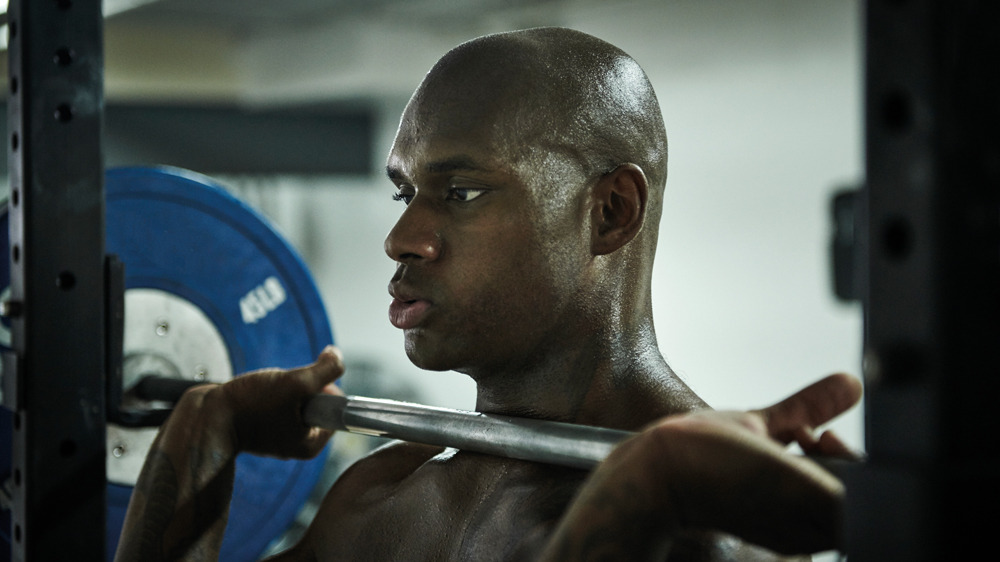
Match your grip to your movements, and let the gains begin.
19. Overhead press: Thumb-free
There’s a reason it’s called the “suicide grip” in bench pressing but in the overhead press, wrapping your fingers and thumb around the same side of the bar shifts your forearms to a more favourable angle and makes pressing easier. Get used to it.
20. Deadlift: Mixed
One palm facing forwards, one backwards will strengthen your grip and let you haul more weight. Make sure you’re keep switching the hand that faces forwards to keep things balanced – and brace yourself against the weight before you pull to safeguard your biceps.
21. Power moves: The Hook
It hurts but it works… and it’s how Olympic weightlifters shift huge loads. Tuck your thumb under your first two fingers. “It secures the bar much better and leads to higher loads lifted long term,” says Adamson. “Anyone who lifts should use it.” It’ll also improve your deadlift.
Get The Right Gear
These are your gym bag essentials – gloves not required.
22. Belt
In a study of veteran squatters, researchers found that the lifters produced 25-40% more “intrabdominal pressure” – basically, the core stability you get from holding a deep breath – by wearing a belt, while the beltless lifters tended to lean forward more during reps. The implication? Belted lifting is safer for the spine, while also increasing quad and hamstring activation at heavy weights. Invest in quality: the Texas Longhorn (pullum-sports.co.uk) is expensive, but it works.
23. Shoes
A stable base is the key. Chuck Taylor-style shoes like Converse are ideal for beginners, since they’re nice and flat with no “give” to reduce your power. As you improve, invest in some weightlifting shoes – a 2012 study found they reduce “trunk lean”, improving form and reducing injury risk.
24. Straps
You should rely on your hands alone for most moves – building a better grip will help with everything else – but for very heavy shrugs or extended deadlifting, straps will stop grip from becoming a limiting factor.
25. Chalk
More weight means more muscle, and using chalk means more weight. “Chalking up to improve your grip can add 10kg to some exercises instantly,” says strength coach Sean McPhillips. If your gym doesn’t allow it, try the liquid variety – or change gyms.
Beat Your Bests
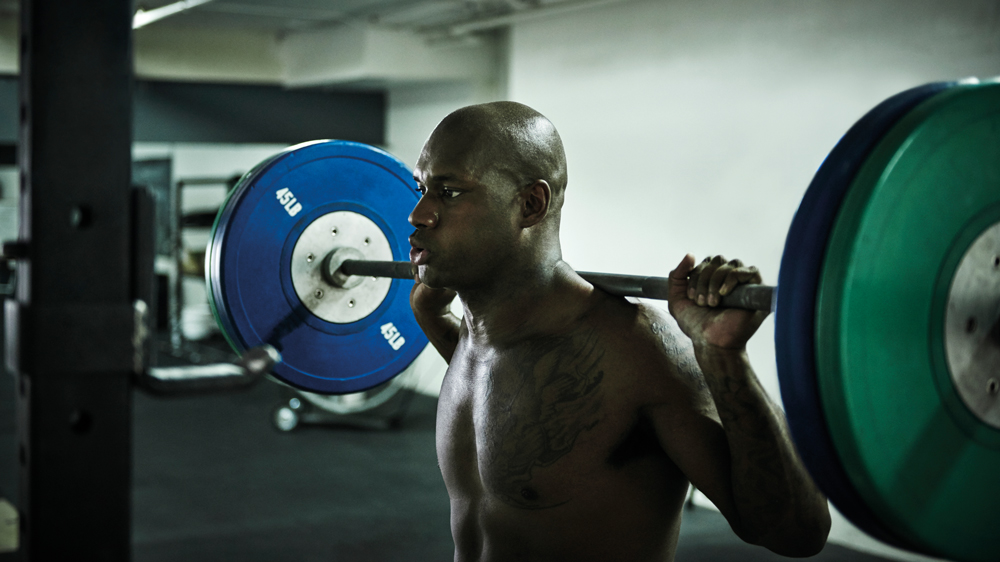
Stuck on a plateau? Shift up your training to reach new heights.
26. Press the bar faster
More weight isn’t always the answer. In a 2014 study, bench pressers who pushed the bar as fast as possible made almost double the strength gains of another group who lifted deliberately slowly. (Obviously you still need to control it on the way down.)
27. Periodise your plan
Been doing three sets of ten forever? Time to change it up: in a 2004 study, lifters who varied their rep ranges regularly improved much more efficiently. The simplest way to periodise your training is to start with three sets of eight for every lift, adding weight until you can’t improve every session. Then switch to 5x5 and repeat the process, then go to 5x3.
28. Add volume
Really stuck? Drop the weight and up the volume. For instance, if the weight you do three sets of eight with is maxed out, drop it by 10% and go up to four sets with eight reps each. Alternatively, add more sets: in a 2012 analysis, lifters who did eight sets of squats (as opposed to one or four) outpaced the competition over a six-week period. Sometimes, more is more.
29. Change focus
“If you’re getting nowhere with one lift, rather than constantly trying to add weight or volume, consider switching your focus to a different movement,” says Adamson. “If you’re stuck on the military press, for instance, do some push presses. Switch back squats for front squats, or deadlifts for cleans.” The change might bring up lagging muscle groups and help you push on through.
Get Strong At Home
Confined to the house with no barbell in sight? You can still make serious gains with minimal kit.
30. Do kettlebell ‘powerbombs’
Haven’t got enough plates to deadlift at home? Donnie Thompson, former record holder of the world’s highest powerlifting total, uses these: swing a kettlebell upward as normal, then get a friend to “spike” it (or just swing down hard yourself) on the downswing. You’ll reap the benefits of your tendons absorbing the extra jolt by improving your off-the-floor lifts. Aim for four sets of ten with a light bell.
31. Use band press-ups
In a 2015 study of experienced lifters, bench pressing and band pressing caused near identical gains for a six-rep max – the added bonus, of course, being that you can take a band anywhere. To do the press-up, wrap it around your shoulders and hold the ends in your hands as you perform the move: two seconds up, two seconds down for each rep.
32. …and the same band for squats
Only got a 10kg dumbbell? The banded goblet squat is a favourite trick of NBA strength coach Tim DiFrancesco: wrap one end of your band in a figure eight around the handle, then grip one of the weighted ends and stand in the other loop.
The Best Supps For Strength
Plan your supplement intake to maximise muscle and strength, using the latest advances in sports science.
33. BCAAs
They’re not just for bodybuilders: in a study from the International Journal Of Sports Nutrition And Exercise Metabolism, lifters who took 100mg per kilogram of bodyweight experienced significantly diminished muscle soreness following a high-volume squat plan.
34. Whey protein
According to a review of studies (including one where bodybuilders trained for 90 minutes a day, six days a week) 1.8g per kilo of bodyweight per day is the point where additional intake stops giving any more benefit for strength. Have one quality shake a day, and get the rest from food.
35. Creatine
It’s your back-up source of ATP, which is naturally synthesised by your body and used to fuel short, fast-twitch efforts: so it’ll let you lift harder, for longer. Supplement with up to 5g a day – and drink plenty of water.
36. Glutamine
Your body should already have stores of this amino acid, but if you’re training hard then it’s worth topping up with up to 10g post-workout. It aids protein synthesis as well as helping glycogen replacement.
37. Caffeine
Old-school lifters take coffee to the gym for good reason: it can decrease fatigue and lower perception of effort, and some studies suggest it can even improve 1RM performance. Take 150-300mg pre-workout, or have a double espresso.
38. Fish oil
It’s worth taking for a variety of health-related reasons, but particularly crucial for strength athletes thanks to anti-inflammatory properties. Research suggests that fish oil’s omega 3s can reduce DOMS and aid recovery, as well as improving protein synthesis alongside carbs.
Use Your Body
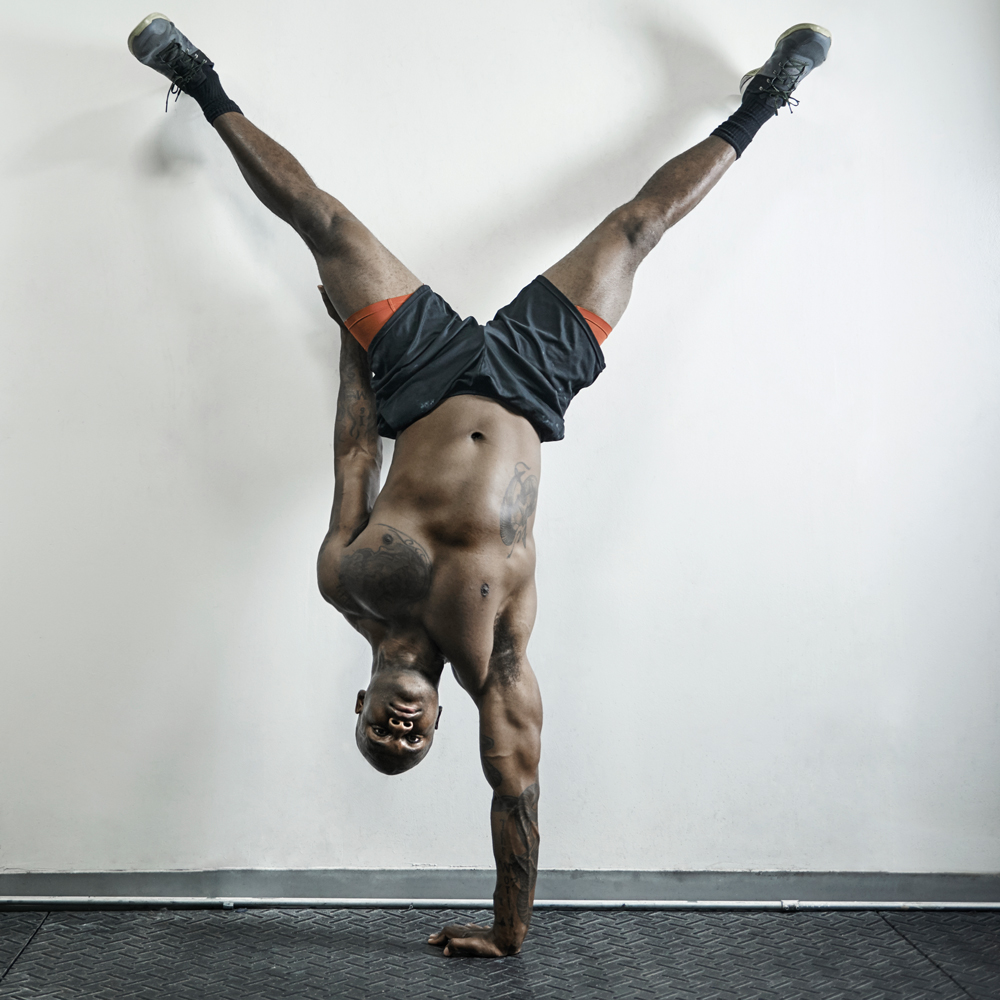
No access to kit? Make gains with nothing but bodyweight with this simple upper/lower-body workout. Do the moves as pairs, resting for 60 seconds. Do four rounds.
39. 1A Handstand press-up
Reps 8
“The ultimate in getting boulders for shoulders,” says School Of Calisthenics co-founder Tim Stevenson. “You can progress by working through whatever range of movement you can manage but the end goal is to get your face to the floor.” Find a pole or tree and kick into a handstand with your feet resting on it. “Screw” your hands into the floor by twisting your elbows so they point behind you. Keeping your elbows close to your body, lower down as far as you can and then push up.
40. 1B Pistol squat
Reps 4 each leg
“A real test of not only strength but also stability and mobility,” says Stevenson. “Tight hips, short hamstrings and restricted ankle range of movement can be kryptonite – but that’s why you should do it.” Stand on one leg with the other leg straight and hovering just off the ground. Start the squat by sitting back and down – if you fall backwards you may need to work on your ankle mobility but as a quick fix, put something under your heel to elevate it. If the hip flexor on your non-standing leg starts screaming, do more foam rolling.
41. 2A Diamond press-up
Reps 8
“If you choose to you can focus on one specific type of press-up that is particularly challenging to build more strength,” says Stevenson. “Start with the diamond, but move up to the one-arm or ‘typewriter’ variations.” For this one, just bring your index fingers and thumbs together into a diamond shape – it’ll make the move much more challenging.
42. 2B Shrimp squat
Reps 4 each leg
Grab your right foot with your right hand and hold it against your glutes. Squat down with your left leg until your right knee touches the ground. Keep your bodyweight forwards over your left foot and then push it hard into the ground to stand back up. Make it easier by doing it without holding your leg – the holy grail is holding the back foot with both hands.
Bring Strongman Training To The Gym
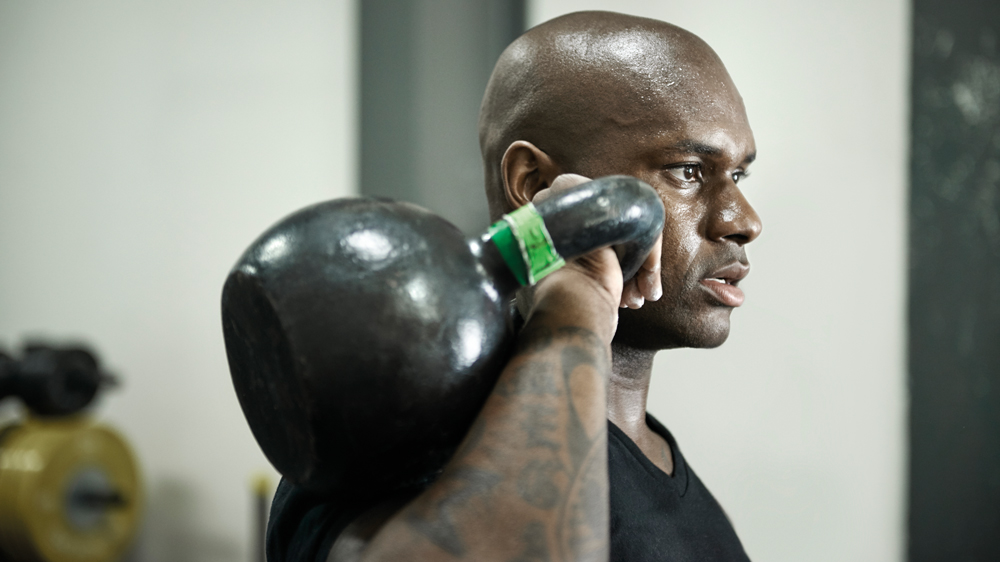
Not everyone has Atlas stones in the garden. Here’s how to improvise.
43. For Fingal’s finger use… a barbell
Prop it up in the corner of your gym and stack up the bumper plates on one end. Lift it by the “sleeve”, then get underneath it to push it upright. Try to bring it down gently.
44. For Conan’s wheel use… a sandbag
Grab your gym’s heaviest bag – even 30kg will do – and hold it Zercher-style in the crooks of your elbows as you do a circuit of the gym. You’ll build barbaric strength, and biceps.
45. For farmer’s walk use… dumbbells
Just grab the heaviest pair your gym has and take them for a walk, one in each hand. Aim for sets of 20m with 30-second rests in between.
…Or Just Resort To Trickery
Want to lift more in a hurry? Make sure you’re getting the most from your body – and add 10% to your lifts today.
46. Wake up your muscles
You can only use as much strength as your body lets you. Warm up with plank activations, a favourite of Commando Temple head coach Rob Blair. Wrap a band around your waist, get into a plank, and get a friend to try to pull you off-balance. You’ll activate your core and be able to push harder.
47. Use your glutes
And not just on lower-body day. “In upper-body pressing movements like the shoulder or log press, clenching your glutes like you’re trying to crack walnuts will create the tension you need to get a new overhead PB,” says Adamson. “It even works on the bench.”
48. Grip and rip
In almost any lift, gripping the bar as hard as possible before go time leads to an effect called irradiation where you fire up the surrounding muscles, giving you more stability and strength. Clench for a second or two, then lift.
49. Go heavy, then go light
Post-activation potentiation sounds complicated. It isn’t. Do a heavy single at 90-95% of your one-rep max, then go straight into a working set .You’ll recruit more type 2 fast-twitch muscle fibres, which you’ll fatigue throughout the work set.
50. Attempt the impossible
As a more advanced variation on the above, load 10-15% more than your current max onto the bar for a squat, take it out of the rack and then quarter-squat it for a rep or two. Put the bar back, strip the plates, then go for your attempt – hopefully with all your synapses firing.
From 2008 to 2018, Joel worked for Men's Fitness, which predated, and then shared a website with, Coach. Though he spent years running the hills of Bath, he’s since ditched his trainers for a succession of Converse high-tops, since they’re better suited to his love of pulling vans, lifting cars, and hefting logs in a succession of strongman competitions.










